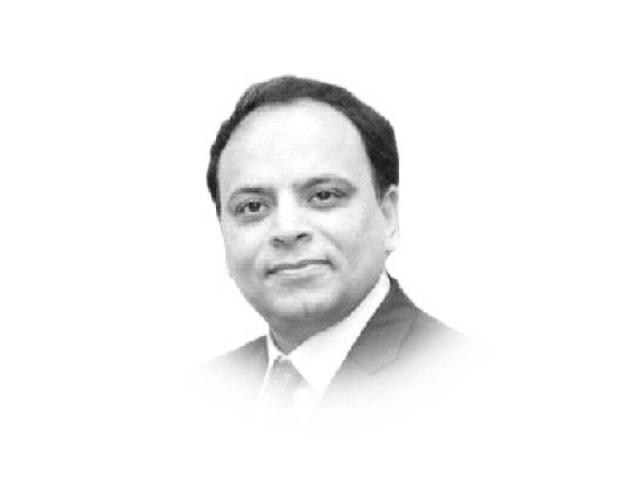Circular economy: a trend or a blip
Political instability remains one of the main causes hindering economic growth in developing countries

The no-trust motion and the ongoing political morass, according to Moody’s Investor Service, has been termed credit negative owing to political uncertainty and questions around the ability of government to continue its economic policies. The Pakistani rupee also fell prey to political instability and slipped to an all-time high of 190 against the dollar in the inter-bank market last week. Political instability, furthermore, remains one of the main causes hindering economic growth in developing countries and Pakistan is no exception. The political situation ensuing in the wake of the no-confidence motion against the PM will remain the major cause behind decelerating economic growth rate in the country. Abject poverty, rising unemployment and territorial conflicts also make the task of bolstering economic growth extremely difficult. Under such boisterous challenges, the developing countries have repeatedly been advised by the development agencies to transform their economies from linear to circular ones. A recent report by the Asian Development Bank Institute (ADBI) “Prospects for transitioning from a linear to circular economy in developing Asia”, for example, highlights the principles of circular economy and their associated challenges and opportunities for developing Asia. As per literature, a circular economy is a production and consumption model that goes much beyond the traditional “reduce, reuse and recycle” framework to further add repairing, renewing, sharing and renting of products as many times as needed. The circular economy approach appears to be in direct confrontation with the linear economy model that has arguably degraded ecosystems and natural environment.
As further processing of products under the circular economy model is an ongoing phenomenon, it inherently depends on significant technological advancements and auxiliary digitalisation. Against this backdrop, it is very important to understand the background and context in which the circular economy model needs to be implemented in countries like Pakistan. Traditionally, most economists and advisers in Pakistan have blindly constricted their policy decisions in the light of Western research. As a result, the indigenous context and local challenges were altogether ignored. ADBI’s report presents several country-specific case studies highlighting current challenges and opportunities. The report superimposes the idea of circular economy focusing less on the contextual challenges faced by the developing countries. The somersault theme of decoupling economic growth from environmental degradation has also been discussed in the report.
Technically ossified concept of circular economy actually needs to be interpreted in the backdrop of three phases of economic development that a country undergoes. The three-stage framework – called Kuznets’ Curve – was presented by an American Noble Laureate Simon Kuznets. In the first phase, a country is more dependent on natural resources extraction due to non-availability of capital. As a result, it witnesses lower levels of per capita income, inequality and environmental degradation. At this stage, developing countries usually experience multiple challenges including political instability. Frequent regime changes is an indicator that Pakistan is still in the first phase of development. At this stage, it would be hard for the first stage countries to address environmental concerns by ignoring poverty. Lack of digital technologies also hampers the interconnection between value-chain activities needed for sustainable production of goods under the circular economy model. In the second phase, countries witness a comparatively steady phase where both income per capita and inequality increase. At this stage, environmental degradation and threats to ecosystem are at their maximum levels. This is the stage where countries like China, India and Brazil have reached. This stage usually witnesses higher levels of income inequality but comparatively lesser political instability. As the second stage countries put their best efforts to enter the third stage of economic development, they usually prefer economic growth over environmental degradation. However, with the increase of economic growth rate, the environmental degradation tends to slow down as the countries start entering the third phase of economic development. This is a better time for countries to start adopting circular economy model by increasingly applying advanced digital technologies. As a matter of fact, the second stage countries actually need such transformation from linear to circular economy because of their reasonably high income per capita. The third stage is marked as ‘high development stage’ where countries witness very high income per capita, lowest inequality and minimum environmental pollution. This suggests that the concept of circular economy is naturally a trend in the third-stage countries but appears to be a beguiling blip for the countries at the first and second stages.
As per the conceptual framework explained above, technically Pakistan is not yet fully ready to transform its economy from linear to circular one. Political instability, sharp depreciation of the rupee, shrinking exports, insufficient digital technologies, surging inflation and widening current account deficit have made it very difficult for successive governments to achieve a respectable economic growth rate. That means economic growth remains the top most priority of the country as per the Kuznets’ model. This further suggests that the idea of decoupling economic growth from environmental degradation remains unconvincing for a developing country like Pakistan. In the post no-confidence motion scenario, people have developed higher expectations from the new government. The new government must have a clear direction and strategy to achieve higher economic growth rates so that the country could successfully enter the next phase of development. The concept and practice of circular economy needs to be practised in the processes of value chain activities not as a compromise for economic growth but as a technological mode of attaining higher economic growth rate. In other words, decoupling economic growth from environmental degradation is just not possible in most developing countries including Pakistan. The best way to safeguard ecosystem and protect environment is to equip developing countries with advanced technologies by promoting the culture of innovation and entrepreneurship. The same principle applies to Pakistan. The new government must coagulate all its energies in attaining higher economic growth rate. Once Pakistan is able to attain higher levels of economic growth, it will itself enter the next level of economic development witnessing lesser inequality and lower environmental pollution. That means the best way to address environmental concerns is to attain a higher economic growth rate that will drastically change the consumption pattern and use of technologies in Pakistan. People of Pakistan, in other words, expect the new government to come up with clear economic policies that could provide much-awaited relief to the poor masses without wasting time in technically feeble areas.
Published in The Express Tribune, April 11th, 2022.
Like Opinion & Editorial on Facebook, follow @ETOpEd on Twitter to receive all updates on all our daily pieces.
















COMMENTS
Comments are moderated and generally will be posted if they are on-topic and not abusive.
For more information, please see our Comments FAQ